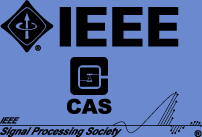Boosting Educator Morale: Reducing Burnout with Monitoring Technology
In a brand new, fast-paced academic environment, educator burnout is a huge problem that affects every instructor and student. A demanding workload, loss of assistance and emotional exhaustion on the part of educators can cause a drop in morale, job dissatisfaction and reduced effectiveness in the lecture room. However, with the advent of monitoring technology, there is hope to alleviate these challenging situations and to revive the morale of educators.
Introduction to Educator Burnout and Monitoring Technology
Educator burnout refers to the physical, emotional, and intellectual exhaustion qualified by the use of instructors due to constant pressure and an overwhelming workload. This is commonplace in the educational environment, with studies reporting alarmingly high tolls of burnout among educators worldwide. Burnout syndrome no longer only affects the well-being of teachers, but also affects the academic performance of scientists and general school performance.
Monitoring technology provides a promising way to tackle educator burnout by offering devices and systems designed to help educators manage their workload, maintain a healthy balance between work and healthy lifestyle, and detect early signs of burnout. From time-management apps to stress-monitoring frameworks, these technologies are revolutionizing the way educators approach their profession and putting a renewed emphasis on prioritizing being nice for the benefit of every educator and college student.
Understanding Educator Burnout
Identifying the signs of burnout is crucial for extending support to those in need. Signs such as perpetual fatigue, a growing sense of detachment or cynicism towards tasks, and a decline in professional performance can indicate burnout. Factors contributing to burnout often include excessive workloads, insufficient administrative support, and the emotional demands of teaching.
The impact of burnout on teacher morale cannot be overstated. Burnout now not only reduces enjoyment and motivation, but also threatens first-class teaching and student engagement. Educators who experience burnout may struggle to connect with students, innovate their teaching practices, and maintain a great classroom environment, all of which hinders student fulfillment in the long run.
The Role of Monitoring Technology in Burnout Prevention
- Time Management Apps:
- Streamline responsibilities and allocate time effectively.
- Reduce feelings of burden and burnout by optimizing time usage.
- Stress Stage Monitoring Systems:
- Provide real-time feedback on educators' pressure levels.
- Enable proactive steps to manage pressure before it escalates.
- Workload Tracking Software:
- Track duties and responsibilities.
- Identify areas of overload and delegate tasks effectively.
- Provide educators with a fact-based view of their workload and well-being.
Utilizing these monitoring technologies empowers educators to manage their workload, monitor their well-being, and prioritize self-care, ultimately preventing burnout and fostering a more sustainable coaching technique.
Implementing Monitoring Technology Effectively
In order to reap all the blessings of the monitoring era, educators must be prepared with the basic education and assistance to use this device effectively. Educators should be provided with professional development opportunities to familiarize them with generation tracking equipment and strategies for integrating it into their practice. Administrators play a key role in helping educators adopt the generation of monitoring by presenting access to assets, addressing privacy and record security issues, and fostering a subculture of well-being within the college community.
Success Stories and Best Practices
Many educators have experienced first-hand the transformative effect of monitoring technology on their well-being and enjoyment of the activity. Case studies and testimonials from educators who have effectively used tracking technology to reduce burnout and improve morale serve as inspiration for others who want to implement similar strategies. Best practices for maximizing the blessings of the viewing era include normal self-evaluation, placing limitations between work and personal existence, and seeking help from peers and mentors.
Recommendations for educators, college administrators, and policymakers interested in implementing monitoring technology initiatives consist of conducting a wish assessment to identify specific subject areas, investing in great tracking generation equipment tailored to the needs of educators, and fostering a tradition of continuous development and innovation within the academic community.
Ultimately, tracking technology holds enormous promise for boosting educator morale and reducing burnout in the academic environment. By offering educators the equipment and tools they need to manage their workloads, monitor their well-being, and prioritize self-care, the monitoring era enables educators to thrive in their careers and create effective learning environments for college students. As we try to navigate the challenges of today's education, investing in tracking technology is not the best strategic decision, but it is an ethically critical decision to help both teachers and students feel comfortable and fulfilled.





